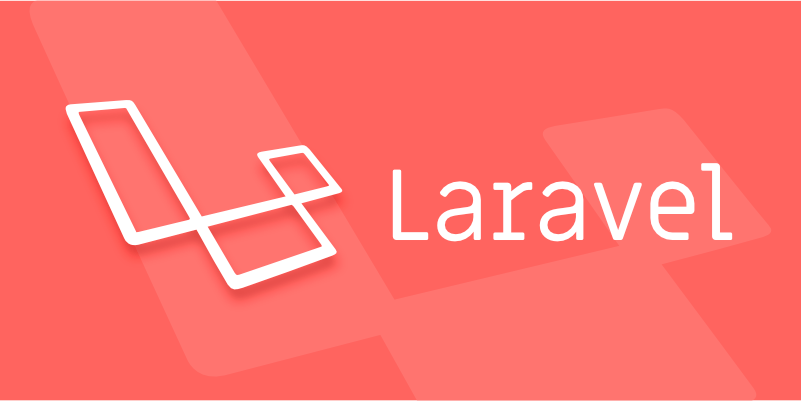In Laravel, passing data to a view can be achieved in many ways, with the core lying incoming data when the view is loaded. 1. Use the controller method to pass parameters: define parameters in the route, the controller receives parameters and uses the view() function to pass data to the view; 2. Pass data directly in the routing closure: suitable for simple projects or tests, directly return to the view and pass parameters through closure logic; 3. Use the with() method to pass data: pass values one by one through chain calls to improve code readability; 4. Pass data to layout view or component: Use the @extends or component attributes of Blade to pass parameters, suitable for projects that use layout or component. The key point is to ensure that the variables are named consistently and select the appropriate method according to the complexity of the project.

In Laravel, passing data from routing to view is a very common operation, usually done by controller methods or closures. Laravel offers a variety of ways to do this, and the key is to understand the flow of data between controllers, routes, and views.

1. Use the controller method to transfer parameters
This is the most common practice. You can define parameters in the route, then pass these parameters to the controller method, and finally pass the data into the view through the view() function.
Example:

// web.php
Route::get('/user/{id}', [UserController::class, 'show']);
// UserController.php
public function show($id)
{
$user = User::find($id);
return view('user.profile', ['user' => $user]);
}illustrate:
-
{id}in the route is a parameter placeholder. - The controller method receives this parameter and then obtains the data based on it.
- When loading a view using the
view()function, the second parameter is an array that is used to pass data to the view.
2. Transfer data directly in routing closure
If you don't want to use the controller, you can also write closure logic directly in the routing file to pass the data.

Example:
Route::get('/hello/{name}', function ($name) {
return view('greeting', ['name' => $name]);
});illustrate:
- This method is suitable for small projects or quick testing.
- Not suitable for complex logic, otherwise
web.phpwill become bloated.
3. Use the with() method to pass data
In addition to passing parameters using arrays, you can also use the with() method to pass values one by one.
return view('user.profile')->with('user', $user);
illustrate:
- This method is clearer, especially when passing multiple variables.
- You can also call it in a chain:
return view('user.profile') ->with('user', $user) ->with('posts', $posts);
4. Pass data to layout view or component
If you use a layout view or Blade component, you can pass the data through @extends and @section , or use component properties.
Blade Example:
@extends('layouts.app', ['title' => 'User Profile'])
Component example:
<x-user-card :user="$user" />
illustrate:
- Use colon
:means that the PHP variable (non-string) is passed. - Receiving data through attributes in components is the recommended method of Laravel 8.
Basically these methods. The core of passing data is to pass an array when the view is loaded, or use the with() method. The key is to select the appropriate method according to the project structure. What is not complicated but is easy to ignore is the correspondence between parameter binding and variable naming. Be careful not to write incorrect variable names.
The above is the detailed content of How to pass data from a route to a view in Laravel?. For more information, please follow other related articles on the PHP Chinese website!

Hot AI Tools

Undress AI Tool
Undress images for free

Undresser.AI Undress
AI-powered app for creating realistic nude photos

AI Clothes Remover
Online AI tool for removing clothes from photos.

Clothoff.io
AI clothes remover

Video Face Swap
Swap faces in any video effortlessly with our completely free AI face swap tool!

Hot Article

Hot Tools

Notepad++7.3.1
Easy-to-use and free code editor

SublimeText3 Chinese version
Chinese version, very easy to use

Zend Studio 13.0.1
Powerful PHP integrated development environment

Dreamweaver CS6
Visual web development tools

SublimeText3 Mac version
God-level code editing software (SublimeText3)
 Working with pivot tables in Laravel Many-to-Many relationships
Jul 07, 2025 am 01:06 AM
Working with pivot tables in Laravel Many-to-Many relationships
Jul 07, 2025 am 01:06 AM
ToworkeffectivelywithpivottablesinLaravel,firstaccesspivotdatausingwithPivot()orwithTimestamps(),thenupdateentrieswithupdateExistingPivot(),managerelationshipsviadetach()andsync(),andusecustompivotmodelswhenneeded.1.UsewithPivot()toincludespecificcol
 Sending different types of notifications with Laravel
Jul 06, 2025 am 12:52 AM
Sending different types of notifications with Laravel
Jul 06, 2025 am 12:52 AM
Laravelprovidesacleanandflexiblewaytosendnotificationsviamultiplechannelslikeemail,SMS,in-appalerts,andpushnotifications.Youdefinenotificationchannelsinthevia()methodofanotificationclass,andimplementspecificmethodsliketoMail(),toDatabase(),ortoVonage
 Understanding Dependency Injection in Laravel?
Jul 05, 2025 am 02:01 AM
Understanding Dependency Injection in Laravel?
Jul 05, 2025 am 02:01 AM
Dependency injection automatically handles class dependencies through service containers in Laravel without manual new objects. Its core is constructor injection and method injection, such as automatically passing in the Request instance in the controller. Laravel parses dependencies through type prompts and recursively creates the required objects. The binding interface and implementation can be used by the service provider to use the bind method, or singleton to bind a singleton. When using it, you need to ensure type prompts, avoid constructor complications, use context bindings with caution, and understand automatic parsing rules. Mastering these can improve code flexibility and maintenance.
 Strategies for optimizing Laravel application performance
Jul 09, 2025 am 03:00 AM
Strategies for optimizing Laravel application performance
Jul 09, 2025 am 03:00 AM
Laravel performance optimization can improve application efficiency through four core directions. 1. Use the cache mechanism to reduce duplicate queries, store infrequently changing data through Cache::remember() and other methods to reduce database access frequency; 2. Optimize database from the model to query statements, avoid N 1 queries, specifying field queries, adding indexes, paging processing and reading and writing separation, and reduce bottlenecks; 3. Use time-consuming operations such as email sending and file exporting to queue asynchronous processing, use Supervisor to manage workers and set up retry mechanisms; 4. Use middleware and service providers reasonably to avoid complex logic and unnecessary initialization code, and delay loading of services to improve startup efficiency.
 Managing database state for testing in Laravel
Jul 13, 2025 am 03:08 AM
Managing database state for testing in Laravel
Jul 13, 2025 am 03:08 AM
Methods to manage database state in Laravel tests include using RefreshDatabase, selective seeding of data, careful use of transactions, and manual cleaning if necessary. 1. Use RefreshDatabasetrait to automatically migrate the database structure to ensure that each test is based on a clean database; 2. Use specific seeds to fill the necessary data and generate dynamic data in combination with the model factory; 3. Use DatabaseTransactionstrait to roll back the test changes, but pay attention to its limitations; 4. Manually truncate the table or reseed the database when it cannot be automatically cleaned. These methods are flexibly selected according to the type of test and environment to ensure the reliability and efficiency of the test.
 Choosing between Laravel Sanctum and Passport for API authentication
Jul 14, 2025 am 02:35 AM
Choosing between Laravel Sanctum and Passport for API authentication
Jul 14, 2025 am 02:35 AM
LaravelSanctum is suitable for simple, lightweight API certifications such as SPA or mobile applications, while Passport is suitable for scenarios where full OAuth2 functionality is required. 1. Sanctum provides token-based authentication, suitable for first-party clients; 2. Passport supports complex processes such as authorization codes and client credentials, suitable for third-party developers to access; 3. Sanctum installation and configuration are simpler and maintenance costs are low; 4. Passport functions are comprehensive but configuration is complex, suitable for platforms that require fine permission control. When selecting, you should determine whether the OAuth2 feature is required based on the project requirements.
 Implementing Database Transactions in Laravel?
Jul 08, 2025 am 01:02 AM
Implementing Database Transactions in Laravel?
Jul 08, 2025 am 01:02 AM
Laravel simplifies database transaction processing with built-in support. 1. Use the DB::transaction() method to automatically commit or rollback operations to ensure data integrity; 2. Support nested transactions and implement them through savepoints, but it is usually recommended to use a single transaction wrapper to avoid complexity; 3. Provide manual control methods such as beginTransaction(), commit() and rollBack(), suitable for scenarios that require more flexible processing; 4. Best practices include keeping transactions short, only using them when necessary, testing failures, and recording rollback information. Rationally choosing transaction management methods can help improve application reliability and performance.
 Handling HTTP Requests and Responses in Laravel.
Jul 16, 2025 am 03:21 AM
Handling HTTP Requests and Responses in Laravel.
Jul 16, 2025 am 03:21 AM
The core of handling HTTP requests and responses in Laravel is to master the acquisition of request data, response return and file upload. 1. When receiving request data, you can inject the Request instance through type prompts and use input() or magic methods to obtain fields, and combine validate() or form request classes for verification; 2. Return response supports strings, views, JSON, responses with status codes and headers and redirect operations; 3. When processing file uploads, you need to use the file() method and store() to store files. Before uploading, you should verify the file type and size, and the storage path can be saved to the database.






